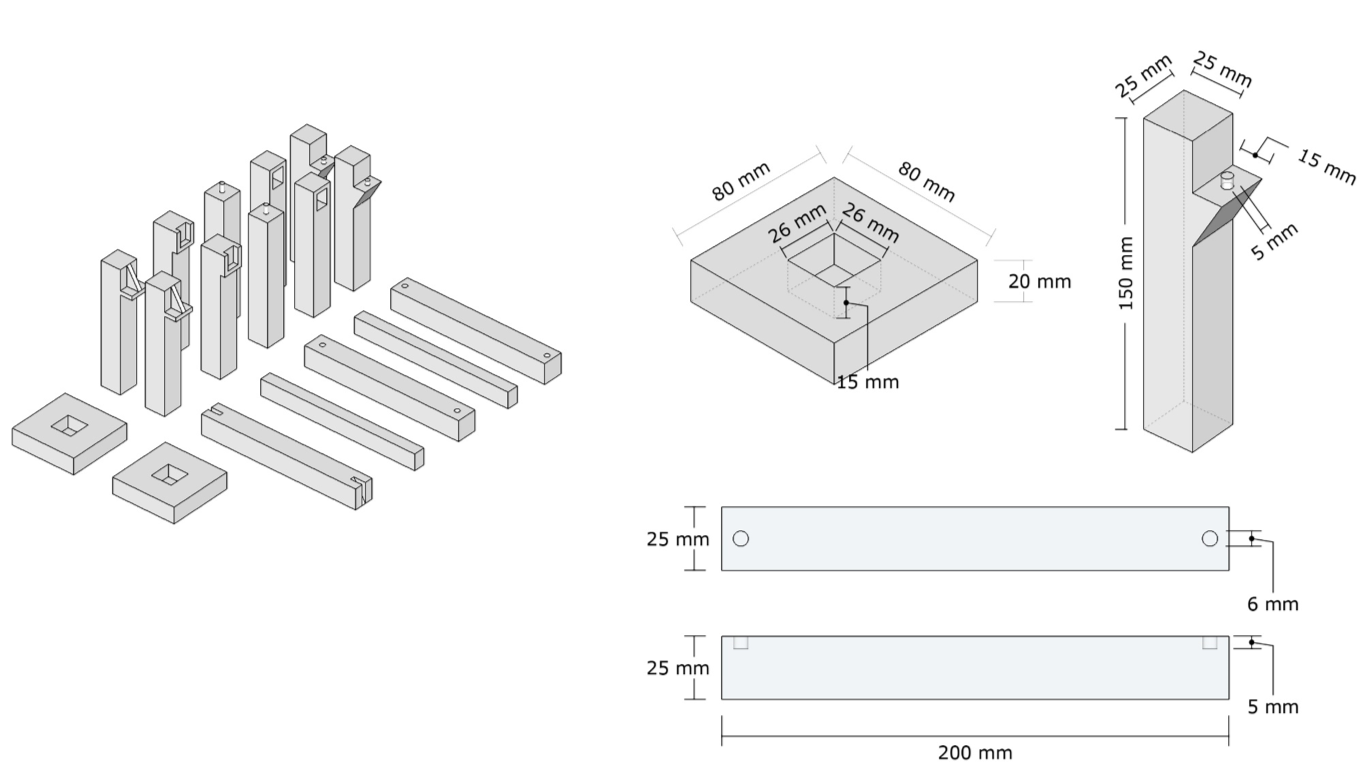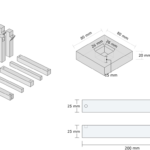
Technichal Specifications
How to use this exercise?
The model shows different types of connections for structural system between pillar and beam and It also will be used to verify how each act in compression and tensioning exercises.
Number of pieces of this exercise
17
General description
The model consists of: 2 rectangular bases with central cavity where the pillars are fitted, 5 pairs of pillars – each pair with a different type of connection and 5 beams with different ends for the connections
The model has two functionalities:
– Show the students some types of structural system connections between beams and columns and allow them to know the design of the connections as well as understand through the 3d model how each part of the structural system fits in the other part.
– Allow the students to test in practice how the structural systems work and react to the pressure and compression, being able to analyse the result and differentiate each type of connection in the process.
Additional Material
Models used:
License Info
Attribution 4.0 International (CC BY 4.0) https://creativecommons.org/licenses/by/4.0/You are free to:
Share — copy and redistribute the material in any medium or format
Adapt — remix, transform, and build upon the material
for any purpose, even commercially.
Under the following terms:
Attribution — You must give appropriate credit, provide a link to the license, and indicate if changes were made. You may do so in any reasonable manner, but not in any way that suggests the licensor endorses you or your use.
No additional restrictions — You may not apply legal terms or technological measures that legally restrict others from doing anything the license permits.
Learning Specifications
How can the model be used in class?
The object can be used to explain concretely how the structural system reacts to the forces of charge, weight, movement, and momentum applied to the structures of a building or any other type of structure.
Because it is a 3D object, it facilitates the visualization of the theory taught in the classroom, since the student can understand and verify in practice the result in the structure and what is the action/reaction of it.
This model can also be adapted and/or expanded to different types and sizes of structural systems, amplifying the use for more complex systems.
What benefits can its use have?
- 3D visualization of the structural system.
- Concrete verification of the information learned in the classroom.
- Visualization of the relation of dimensions between the parts of the structural system.
- Possibilities to learn about different types of pillar-beam connections.
- Verification of the action / reaction of the system to structural charges.
- Better understanding of the calculation of reactions. ∑ Fx=0, ∑ Fy=0, ∑ M=0
Can it be used in other subjects?
- Architecture
- Construction Technology
- Design
